By Chelsea Yates / Photos courtesy of Washington Hyperloop
Since 2016 Washington Hyperloop has been one of the top three U.S. teams competing in SpaceX’s summer challenge. Now they’re setting a new goal: get more kids excited about engineering.
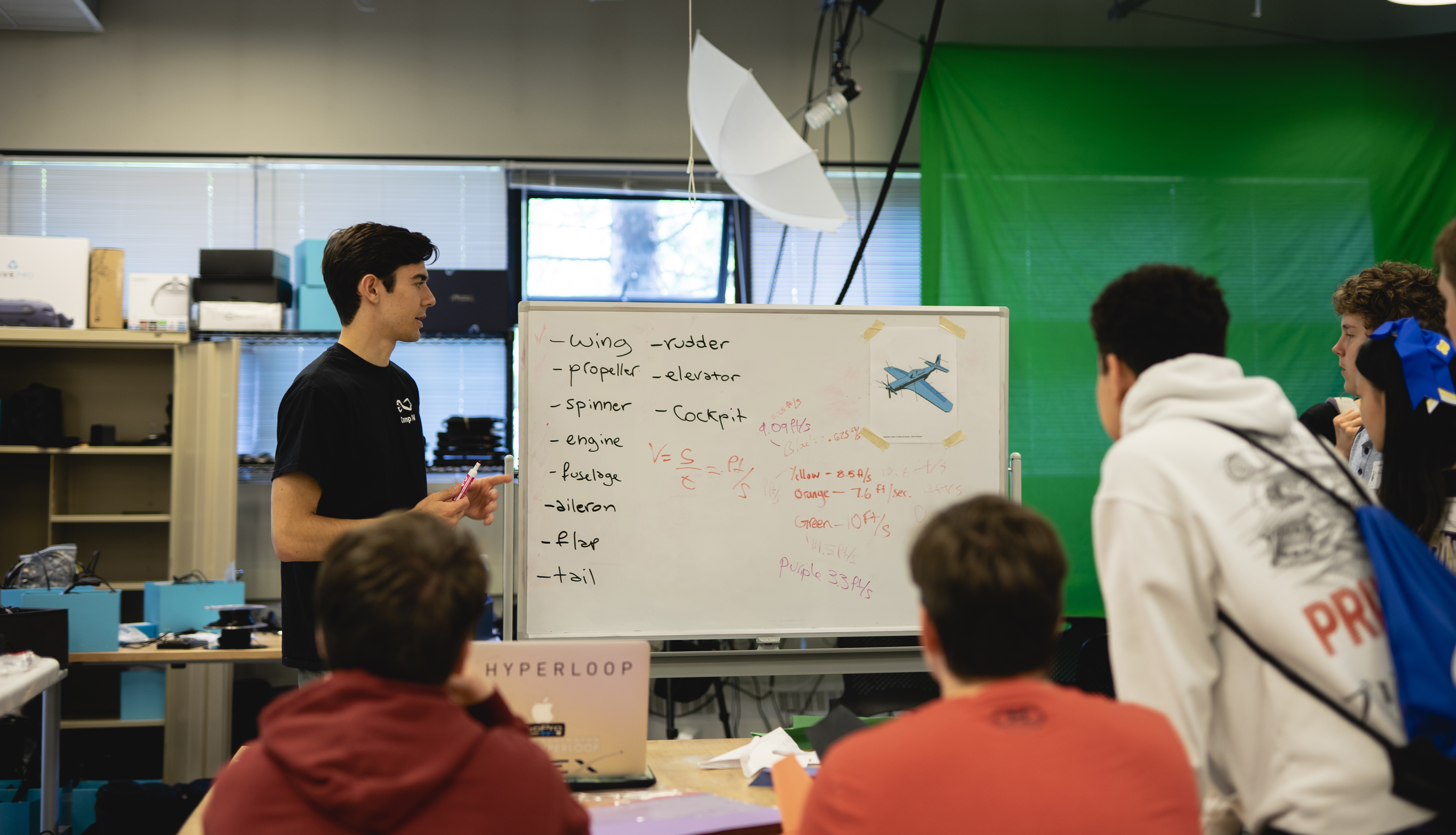
Encouraging younger kids in STEM turned out to be as much fun as it is important,” says ME senior John Buffalo, left.
Not long after John Buffalo began ESS307, a diversity outreach class offered through Earth and Space Sciences (ESS), he told his Washington Hyperloop teammate Ethan Simcock to sign up.
“Originally I enrolled to fill some requirements, but wow did it open my eyes,” Buffalo, a mechanical engineering (ME) senior, remembers.
Taught by ESS instructor Isabel Carrera Zamanillo, the course exposes students to the barriers that underserved and underrepresented young people in the Northwest may face in pursuing careers in science, technology, engineering and math (STEM). It also helps UW students understand how to design culturally appropriate outreach activities. Along with attending lectures, students are required to log 40 service hours in Washington schools, working with K-12 students and teachers through science education outreach.
“They may have been ‘required,’ but honestly those volunteer hours flew by,” Buffalo says. “Encouraging younger kids in STEM turned out to be as much fun as it is important.”
Simcock, a civil and environmental engineering senior, agrees.
“My first thought was, why aren’t all engineering students doing this?” he recalls.
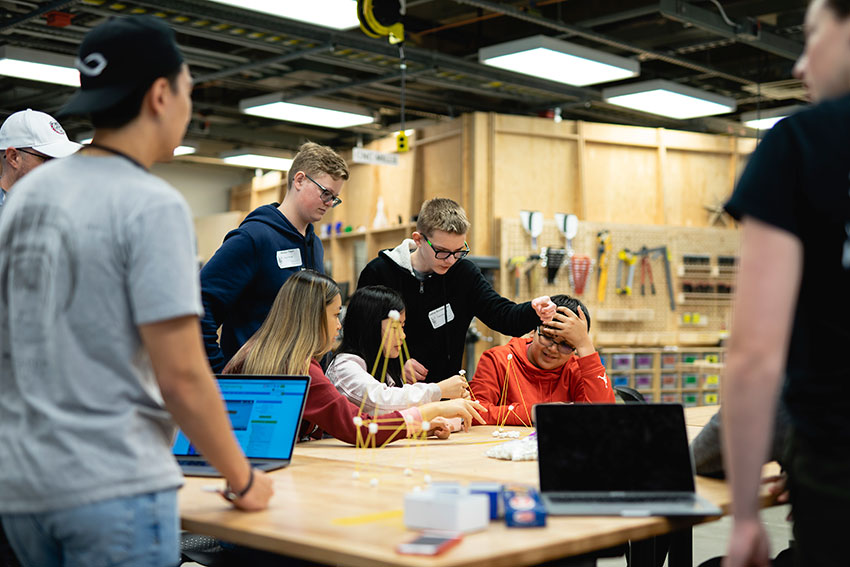
Middle schoolers construct spaghetti and marshmallow structures. The goal is discover how tall they can be and how much weight they can support.
Then the two had an idea: Why not get Washington Hyperloop more involved in outreach?
A student team that designs, builds and competes small-scale pods in SpaceX’s college Hyperloop challenge each summer, Washington Hyperloop consists of about 30 UW students; Simcock is one of the directors, and Buffalo leads the Structures subteam.
“Many of us had access to advanced science and math classes and resources before coming to the UW, but that’s not the case for a lot of high school students, and the degree to which access varies school-to-school is shocking,” Simcock says.
So they pitched their idea: in addition to preparing for summer competition, would their teammates be open to participating in a few outreach events?
They received a resounding answer: Of course!
A need for STEM outreach
Middle school is an especially critical time for STEM engagement, according to ME professor and College of Engineering Associate Dean of Academic Affairs Brian Fabien.
“Kids begin to identify with specific disciplines and question their confidence in others around the fifth grade, so this is the time to capture their imaginations and help them see possibilities,” he says.
Unequal access to high-quality STEM education complicates matters further. Because these inequalities tend to run parallel with socioeconomic and racial lines, outreach efforts are especially important for low-income and minority students.
“It’s great if a high school has 3D printers, a robotics club and coding classes, but many don’t,” says Buffalo. “That means students start college — if they have access to college — at different levels of familiarity. Those who’ve already been doing engineering-type work have a head start.”
Fabien adds that it’s especially beneficial for college students and teams like Washington Hyperloop to be involved with outreach activities, since younger students are more likely to identify with college students than with faculty. And exposing college students to gaps in educational access helps shape their perspectives and understanding. It also gives them an opportunity to sharpen their communications skills.
“We need to be able to explain what we do as engineers and how it benefits society,” Fabien says. “Talking to middle schoolers is very different than talking to peers. In many ways it’s more challenging, and that’s a good thing.”
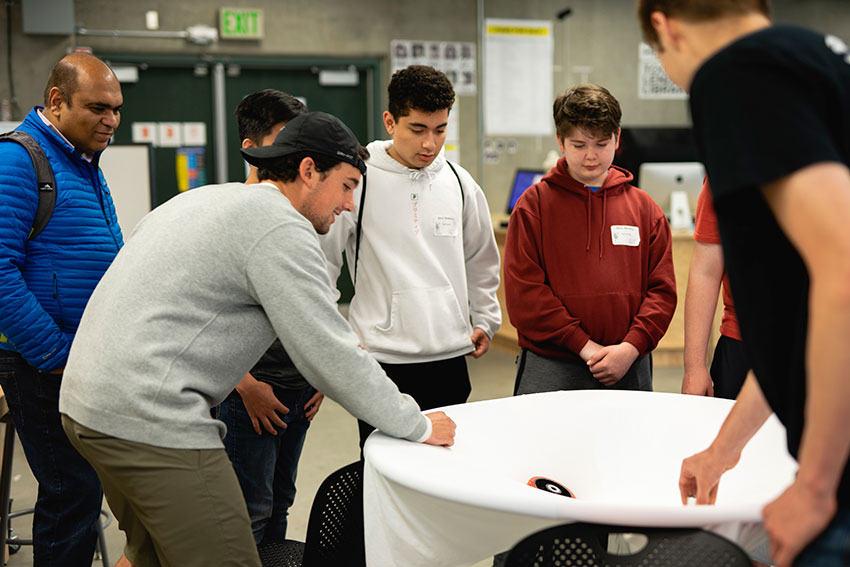
Hyperloop team members release marbles and weights onto stretched spandex fabric to explain gravity.
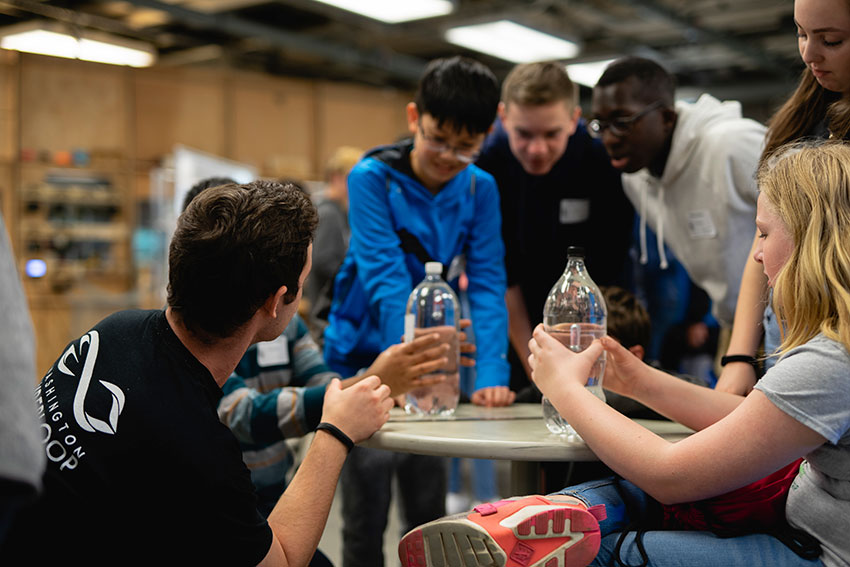
Soda bottles are used to demonstrate the effect of buoyant forces on a Cartesian diver.
Encouraging engineering excitement
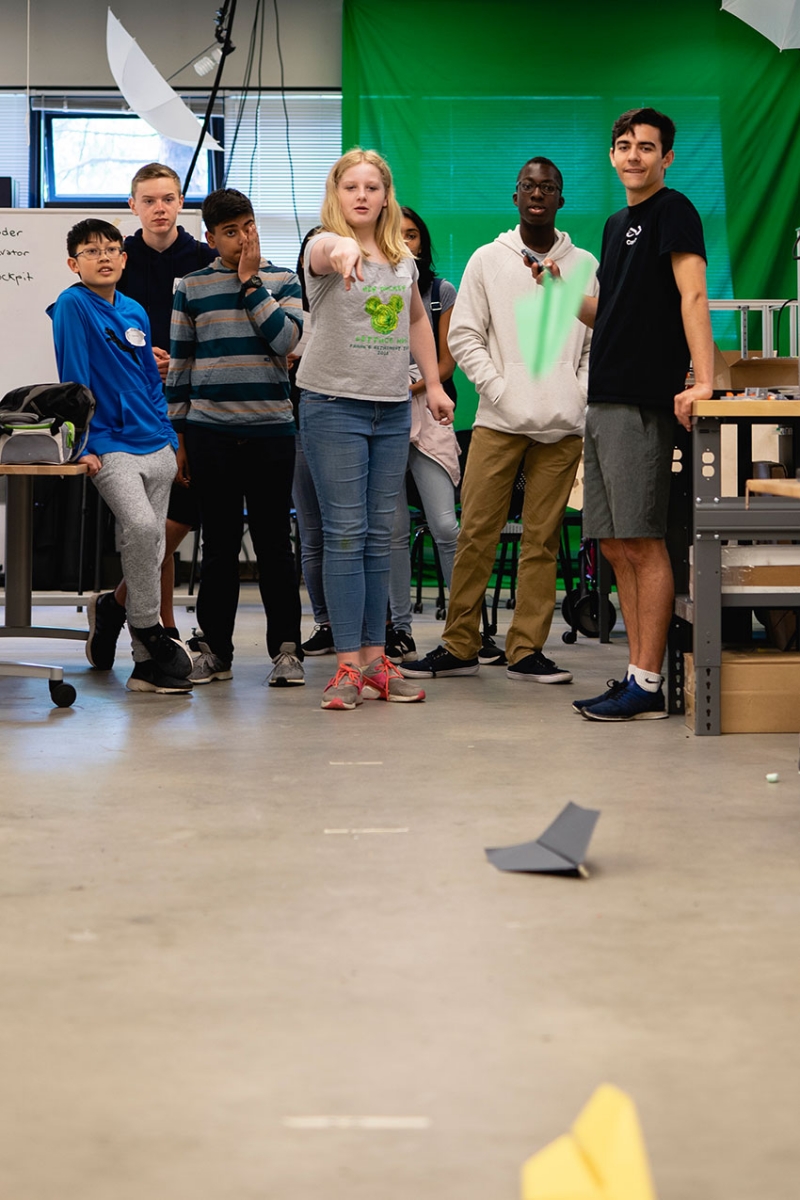
Middle schoolers test different types of paper airplanes to explore the effects of air resistance, gravity and friction.
With their ESS instructor’s help, Buffalo and Simcock connected Washington Hyperloop with Northwest Earth and Space Sciences Pipeline, which was coordinating educational events in conjunction with the Apollo 11 mission’s 50th anniversary last spring. Team members participated in two events for middle school students in Tacoma and Everett. Each event drew more than 100 parents and students.
Hyperloop team members led activities that demonstrated physics and science principles. For one, they used stretchy Lycra fabric and marbles to emulate how gravity works on planets. For another, they demonstrated the effect of buoyant forces on a Cartesian diver with a soda bottle.
“While the demos were fun, we got a lot of questions — from kids and parents — about what exactly engineers do, and what it’s like to be an engineering student,” Simcock says. “So we started building time into our outreach events to discuss this.”
They also realized the value in hosting classes on campus.
“This way, kids can see what college looks like and, hopefully, see themselves at a place like this one day,” Buffalo explains.
Last spring they tested on-site demonstrations and discussion by inviting an Everett Gateway Middle School class into their UW CoMotion workspace. Buffalo says they focused the presentation on foundational engineering activities.
“As much as we love talking to people about our pod, it’s doesn’t resonate with middle schoolers the same way that, say, challenging them to build structures from spaghetti and marshmallows to determine how much weight they can support does,” he says.
The team is eager to advance their outreach efforts this year by hosting more classes on campus.
“If Washington Hyperloop can encourage kids to get excited about engineering, hopefully we can also help them see that college is an option and imagine themselves in a fun engineering workspace like ours one day soon,” says Simcock.
Originally published December 9, 2019